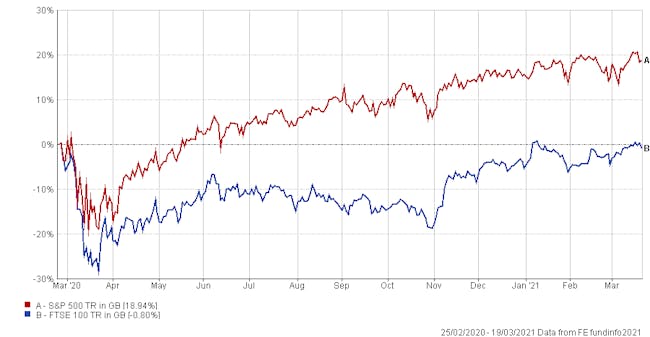
Coronavirus and the markets, a year on
Lovewell Blake
I don’t know how many of us thought that we’d still be adhering to so many restrictions after all this time, but here we are, over a year on and the pandemic is still having a big impact on all of us.
There is hopefully light at the end of the tunnel, with vaccines being rolled out and Mr Johnson’s ‘roadmap’ potentially seeing a better summer ahead. Twelve months on though, how have the markets, and our investments, held up?
An article on this very website in March of last year, commented that despite screaming headlines about big falls in the global stock markets, it was important not to panic. Instead, investors should keep a long-term view.
The initial falls were big. As investors started to realise the economic cost of the pandemic, equities were sold off at record levels. The FTSE 100 index suffered its steepest fall since 1987’s ‘Black Monday’, whilst a volatile S&P 500 index in the US saw record daily falls, and rises, all in the same month.
What about if you had panicked and sold investments in those indices? Well, just look at what you’d have missed out on, this graph shows the markets just before the biggest falls, up until now:

Source – Financial Express Analytics (includes dividend reinvestment)
If you’d have sold out at the low point in March, you’d have lost out on the subsequent recovery, and crystallised a big loss. Those who kept patience have either made back their money, or in the case of the S&P 500, made a decent profit. In hindsight of course, March 2020 also provided an excellent buying opportunity for those who were savvy.
Although the spectacular recovery of equities has eclipsed them in recent times, the rise of government bonds and precious metals in the early days of the pandemic, showed the importance of diversification across different asset-classes. This helped cushion stock market falls in diversified portfolios.
There is no doubt that the major fiscal stimulus packages introduced particularly by US and UK governments, have had a big influence on stemming the fallout. In addition, there are some companies which have benefited massively from the pandemic, with tech stocks seeing the benefits of an acceleration in home working for instance. This particularly helped the tech-heavy US stock market, which somewhat outperformed the possibly Brexit-weary UK index.
Of course, none of us can predict what will happen next, but here in the UK at least there seems to be some hope on the horizon. Although the Bank of England think that GDP will contract by 4% in the first quarter of the year, it expects the economy to rebound swiftly from the second quarter onwards, once enough people have been vaccinated to allow Covid restrictions to be lifted. Indeed, it has said that providing all goes to plan, and consumer spending returns to normal, GDP could be back to pre-Covid levels at the end of the year. It cautions, of course, that there is much uncertainty still.
Whatever happens, market volatility is normal, and having a sound, well-diversified, investment strategy could help you to ride this out, paving the way for longer term gains.
This has certainly been illustrated over the last twelve months.
You can view this original Lovewell Blake article and others here
If you have any specific questions or would like to speak to a member of the Lovewell Blake team, get in touch via email [email protected]